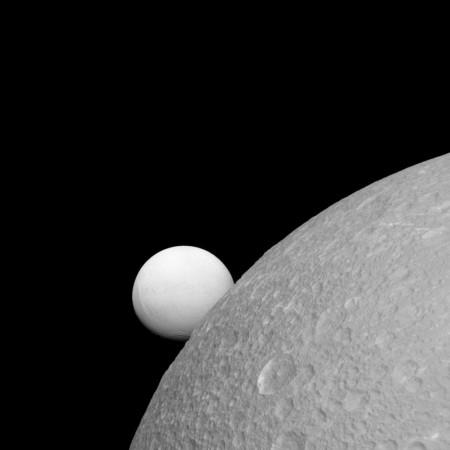
In Prometheus, director Ridley Scott's 2012 prequel to Alien, the android David (played by Michael Fassbender) asks: How far would you go to get your answers?
Also Read: EmDrive: Has the 'impossible' technology started a new space race between US and China?
In 2017, it seems humans may go as far as Europa and Enceladus, moons of Jupiter and Saturn respectively.
Well OK, humans won't physically go there, but they'll certainly be hitting these moons with everything they've got in the hope of finding signs of life.
Scientists seem to be united in the view that 2017 will be the year the search for extra-terrestrial life will focus on Jupiter's moon Europa and Saturn's moon Enceladus. And they seem to be unusually optimistic that they will find something.
The quest to see if we are alone in the universe is inconclusive till date. So what makes them think 2017 will be any different?
Simon Foster, a physicist from the Imperial College London, UK believes that the signs of alien life will be found on Enceladus and Europa, and has quickly dismissed claims made by certain websites that life has already been found on Mars and Jupiter.
According to Professor Foster, NASA's Cassini mission is likely to discover something stunning, like traces of life in the celestial bodies in and around the orbits of Jupiter or Saturn.
The reason these moons inspire so much hope in alien hunters is the fact that beneath their kilometers-thick ice surfaces, there are huge oceans directly in contact with mantles that could feature volcanic activity, giving rise to the perfect environment for life to flourish.

Europa is believed to have far more water than Earth. What's more is that the water is believed to have a salt content akin to that on Earth; also scientists believe that Europa's core could be made of Iron, again similar to Earth's.
Over the years, unusual and unidentified radio signals coming in from the direction of Europa have given rise to speculation that there is alien life -- albeit under the ice -- on the moon. Further investigation of the signals, however, suggest that they originated from a neutron star outside the system, and had no foundation for intelligent life.
While we have not put a lander or rover on Europa or Enceladus as yet -- the most recent images of Europa came when NASA's New Horizon probe flew past it on its way to Pluto in 2012 -- NASA's Europa Clipper mission (launch date not announced) will attempt 45 low-altitude flybys of the moon, armed with ice-penetrating radar, short-wave infrared spectrometer, topographical imager, and an ion- and neutral-mass spectrometer.
Enceladus, on the other hand, is at the epicentre of multiple proposed missions by NASA, the European Space Agency and the German Aerospace Centre (which is planning a lander mission). What's more, the much-vaunted Titan Saturn System Mission, a joint operation between NASA and the ESA will focus on Enceladus, although the launch date has been postponed to mid-2020s after NASA gave priority to the Europa Jupiter System Mission – Laplace.
As for this year, look out for a lot of chatter on the two moons as the astronomical and xenobiology communities start laying the groundwork for the two flagship missions set to launch in the next 10 years.












!['Had denied Housefull franchise as they wanted me to wear a bikini': Tia Bajpai on turning down bold scripts [Exclusive]](https://data1.ibtimes.co.in/en/full/806605/had-denied-housefull-franchise-they-wanted-me-wear-bikini-tia-bajpai-turning-down-bold.png?w=220&h=138)
![Nayanthara and Dhanush ignore each other as they attend wedding amid feud over Nayanthara's Netflix documentary row [Watch]](https://data1.ibtimes.co.in/en/full/806599/nayanthara-dhanush-ignore-each-other-they-attend-wedding-amid-feud-over-nayantharas-netflix.jpg?w=220&h=138)



